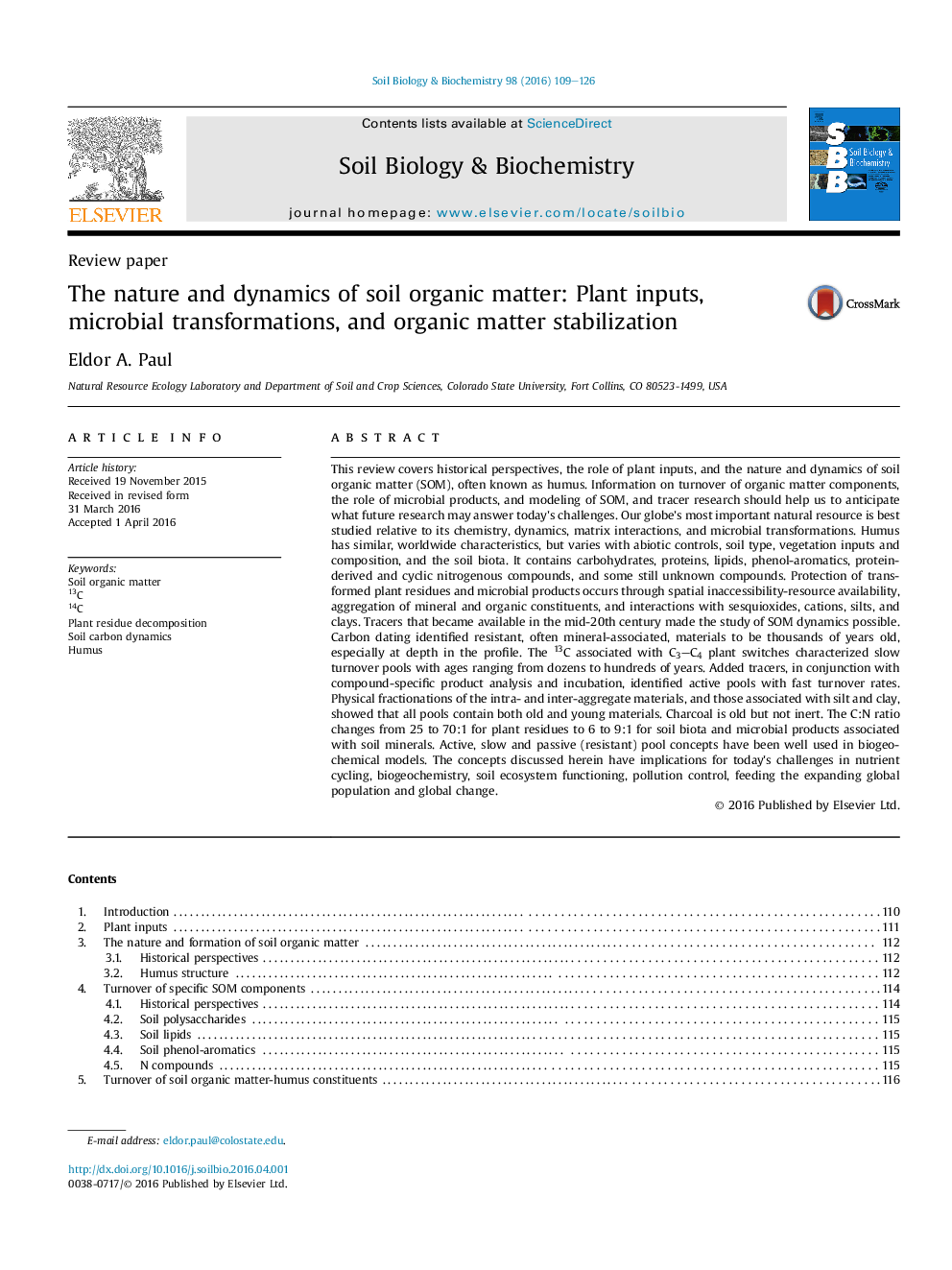| کد مقاله | کد نشریه | سال انتشار | مقاله انگلیسی | نسخه تمام متن |
|---|---|---|---|---|
| 8363541 | 1542586 | 2016 | 18 صفحه PDF | دانلود رایگان |
عنوان انگلیسی مقاله ISI
The nature and dynamics of soil organic matter: Plant inputs, microbial transformations, and organic matter stabilization
ترجمه فارسی عنوان
طبیعت و پویایی مواد آلی خاک: ورودی گیاه، تغییرات میکروبی و تثبیت ماده آلی
دانلود مقاله + سفارش ترجمه
دانلود مقاله ISI انگلیسی
رایگان برای ایرانیان
کلمات کلیدی
موضوعات مرتبط
علوم زیستی و بیوفناوری
علوم کشاورزی و بیولوژیک
دانش خاک شناسی
چکیده انگلیسی
This review covers historical perspectives, the role of plant inputs, and the nature and dynamics of soil organic matter (SOM), often known as humus. Information on turnover of organic matter components, the role of microbial products, and modeling of SOM, and tracer research should help us to anticipate what future research may answer today's challenges. Our globe's most important natural resource is best studied relative to its chemistry, dynamics, matrix interactions, and microbial transformations. Humus has similar, worldwide characteristics, but varies with abiotic controls, soil type, vegetation inputs and composition, and the soil biota. It contains carbohydrates, proteins, lipids, phenol-aromatics, protein-derived and cyclic nitrogenous compounds, and some still unknown compounds. Protection of transformed plant residues and microbial products occurs through spatial inaccessibility-resource availability, aggregation of mineral and organic constituents, and interactions with sesquioxides, cations, silts, and clays. Tracers that became available in the mid-20th century made the study of SOM dynamics possible. Carbon dating identified resistant, often mineral-associated, materials to be thousands of years old, especially at depth in the profile. The 13C associated with C3C4 plant switches characterized slow turnover pools with ages ranging from dozens to hundreds of years. Added tracers, in conjunction with compound-specific product analysis and incubation, identified active pools with fast turnover rates. Physical fractionations of the intra- and inter-aggregate materials, and those associated with silt and clay, showed that all pools contain both old and young materials. Charcoal is old but not inert. The C:N ratio changes from 25 to 70:1 for plant residues to 6 to 9:1 for soil biota and microbial products associated with soil minerals. Active, slow and passive (resistant) pool concepts have been well used in biogeochemical models. The concepts discussed herein have implications for today's challenges in nutrient cycling, biogeochemistry, soil ecosystem functioning, pollution control, feeding the expanding global population and global change.
ناشر
Database: Elsevier - ScienceDirect (ساینس دایرکت)
Journal: Soil Biology and Biochemistry - Volume 98, July 2016, Pages 109-126
Journal: Soil Biology and Biochemistry - Volume 98, July 2016, Pages 109-126
نویسندگان
Eldor A. Paul,
